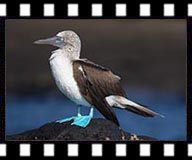Day 7 (Saturday, May 26): Santa Cruz Island (Puerto Ayora)
Now for the first time on our trip we returned to an island that we landed before -- Santa Cruz, the sense of this trip nearing its end was inescapable. We landed on Puerto Ayora, the most populous town in the Galapagos.
We would take a few land-based excursions on this day, and our first visit was to Los Gemelos (The Twins) sinkholes, which were formed when the volcanic roof of magma chambers collapsed.
(Click on each image to see the high-resolution version)
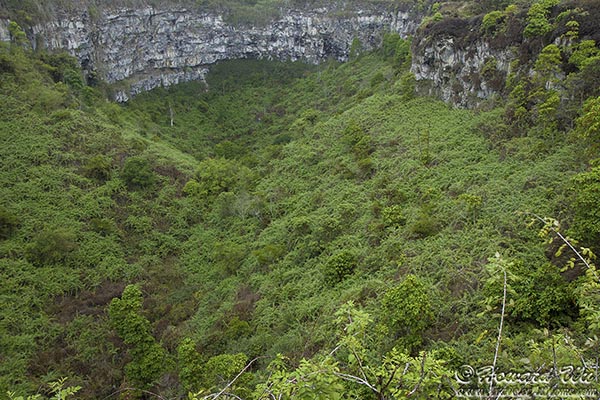
Sinkhole
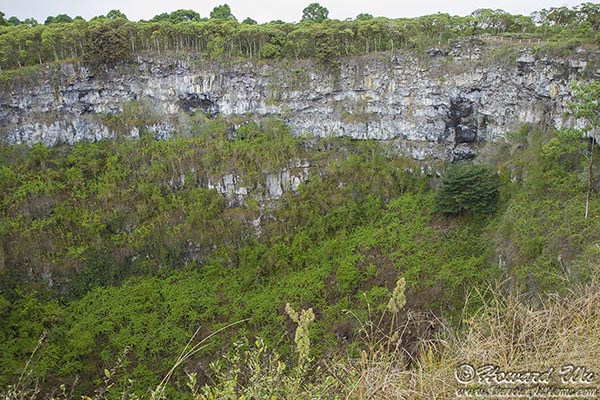
Sinkhole
It was rather dreary in the highlands, but it was a nice place to see birds near the sinkholes. In a short period of time, I saw and photographed two new Darwin's Finches -- a Warbler Finch and a Woodpecker Finch.
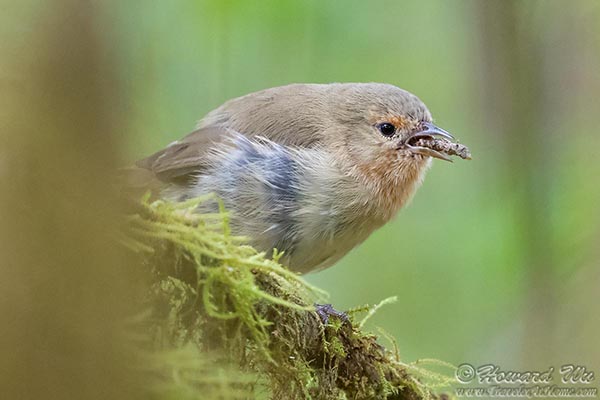
Warbler Finch
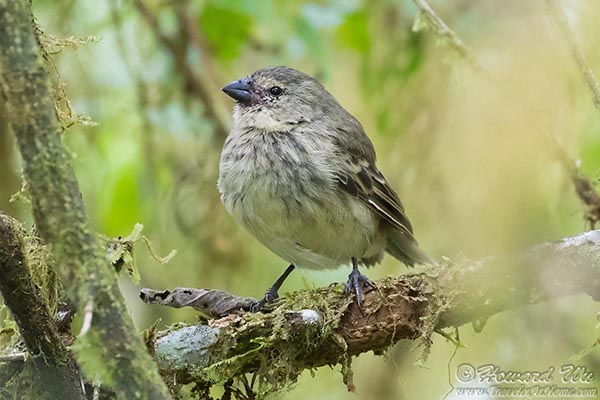
Woodpecker Finch
We proceeded to the village of Bella Vista and checked out the Lava Tunnel, which was formed when the molten lava cooled and hardened while the liquid magma inside continued to flow through during a volcano eruption.
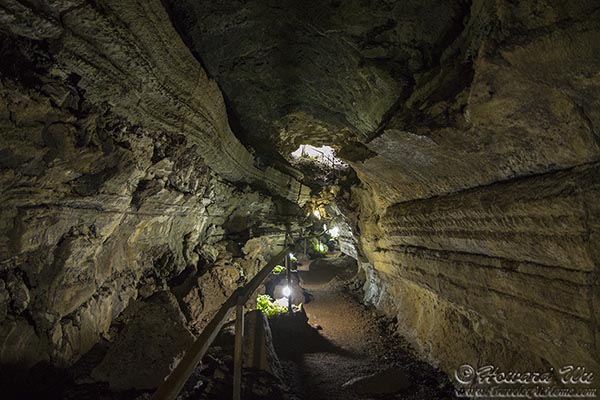
Lava Tunnel
This small village is also a Giant Tortoise sanctuary. There were many guava trees there. The guava is an invasive species in the Galapagos, but the Giant Tortoise relish their sweet and fragrant fruits. We even picked up one to eat and it was delicious. These tortoises are really in tortoise heaven.
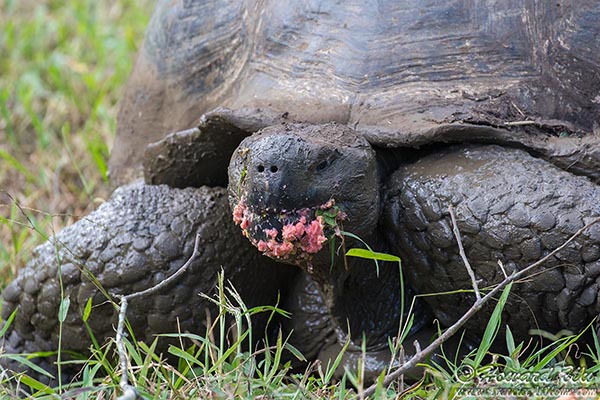
Giant Tortoise
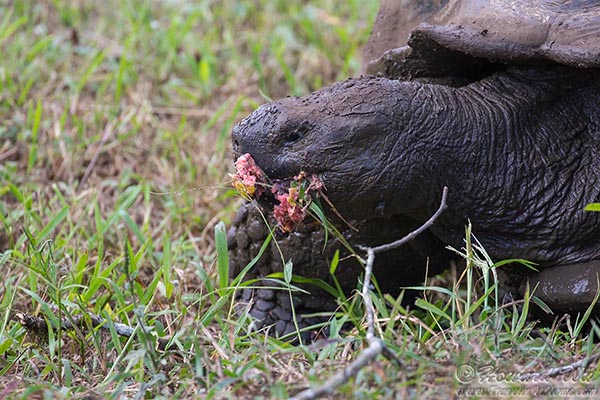
Giant Tortoise
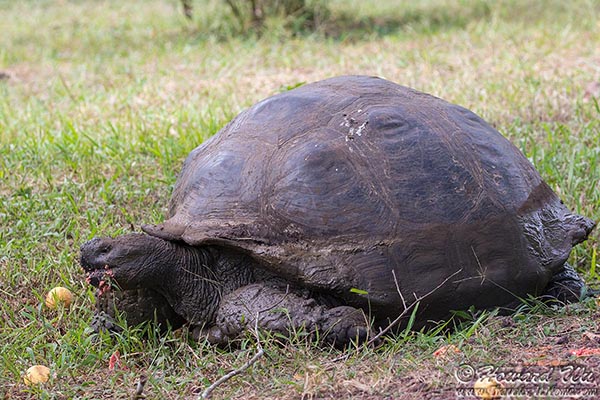
Giant Tortoise
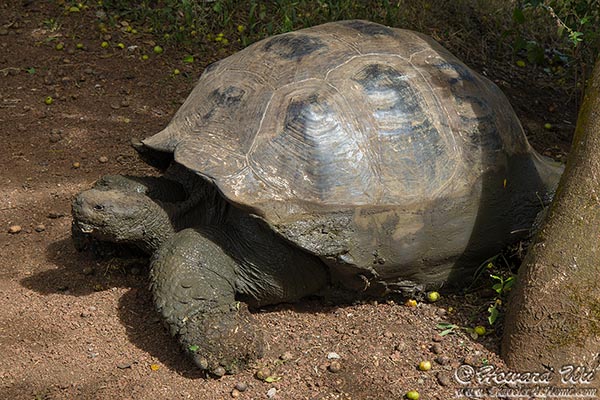
Giant Tortoise
At a mud pond, several Giant Tortoises were wallowing in the mud, enjoying their favorite activity.
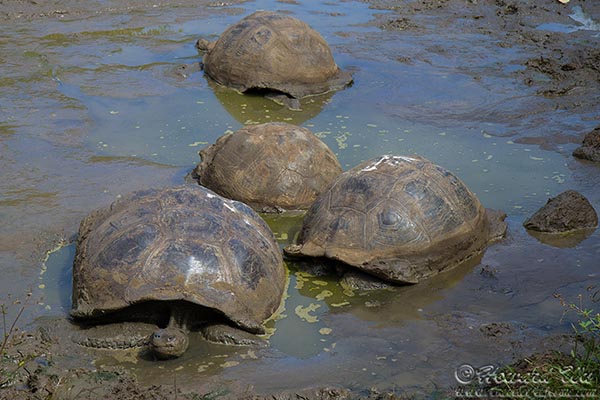
Giant Tortoises
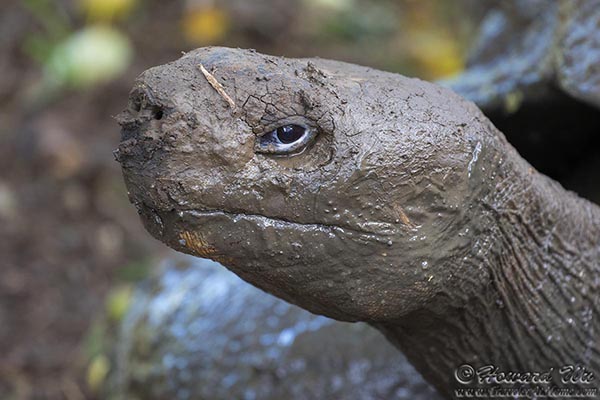
Giant Tortoise
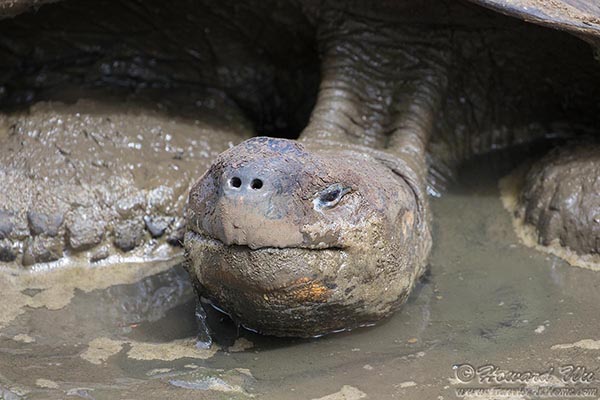
Giant Tortoise
This sanctuary is also an excellent place to watch Darwin's Finches (and unlike the tortoises, they are free) because of the readily available food.
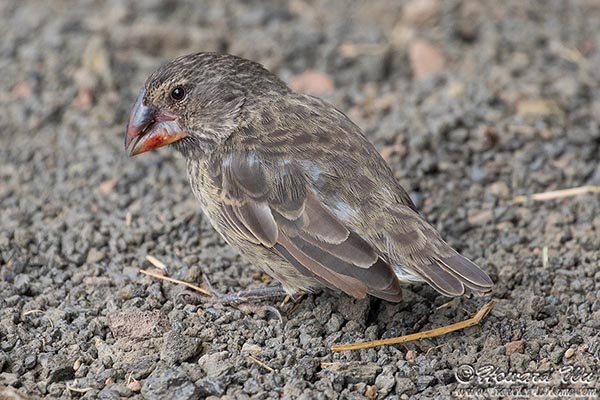
Darwin's Finch (Medium Ground Finch?)
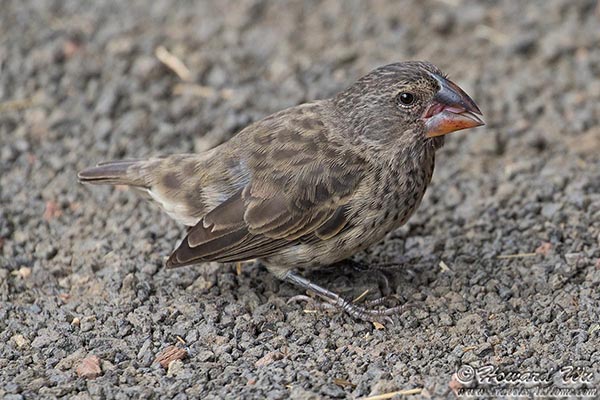
Darwin's Finch (Medium Ground Finch?)
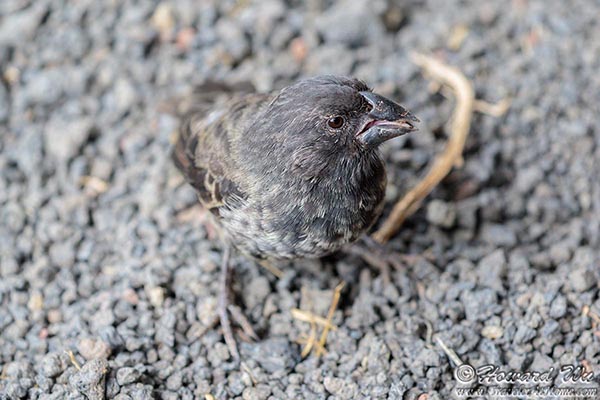
Darwin's Finch (Medium Ground Finch?)
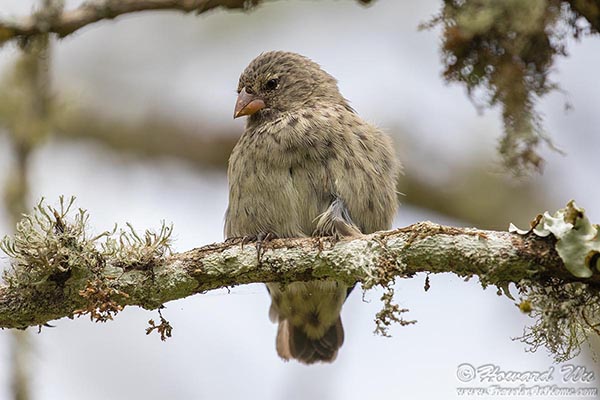
Darwin's Finch (Small Ground Finch?)
Because of the flowering plants that grow there, many species of butterflies can be observed.
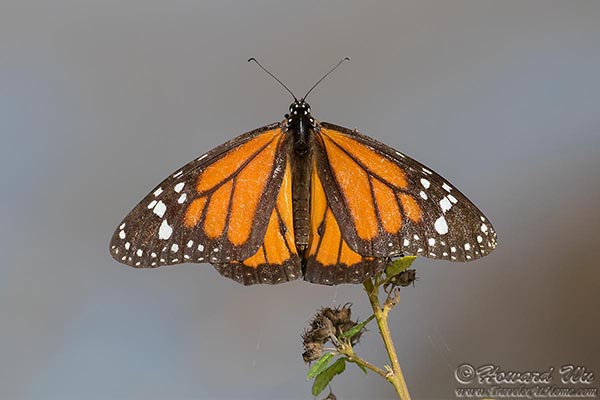
Monarch Butterfly
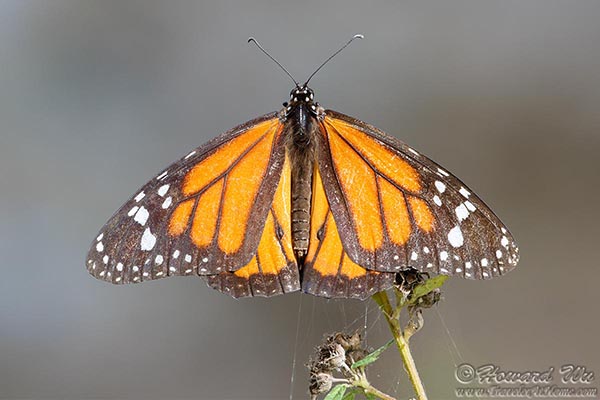
Monarch Butterfly
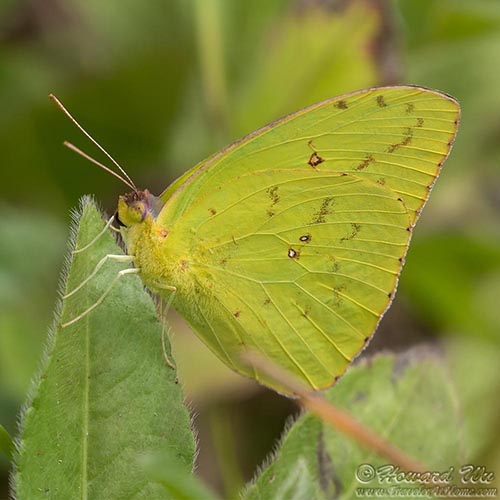
Cloudless Sulphur Butterfly
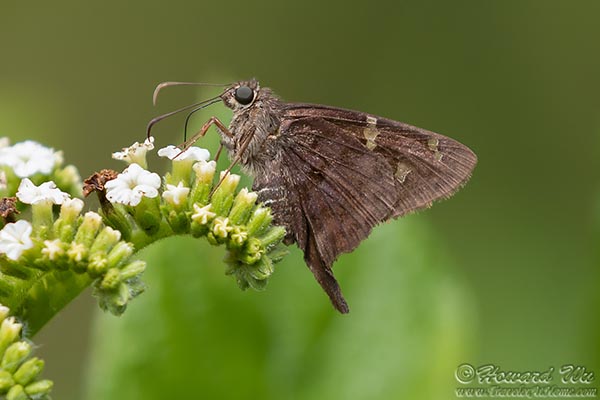
Large-tailed Skipper (Urbanus dorantes galapagensis)
Thanks to the nearby pastures, Cattle Egrets could also be found there.
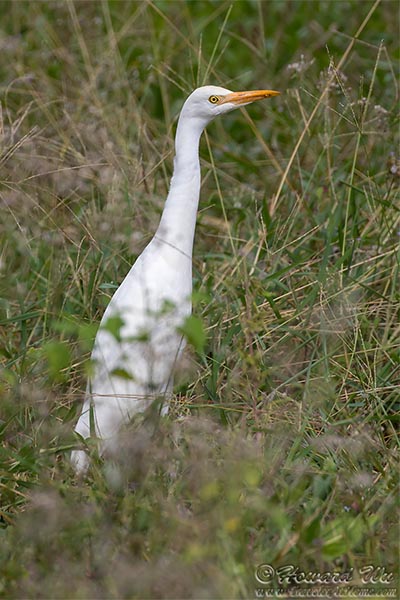
Cattle Egret
In the afternoon we visited the Charles Darwin Research Station, a place of almost pilgrimage status in the Galapagos. It is a research station and Giant Tortoise breeding center with different species of captively bred Giant Tortoises and other exhibits. But first, along the way, we encountered our familiar reptilian buddies the Marine Iguana and Lava Lizard again, who, as usual, were huddling and cuddling together.
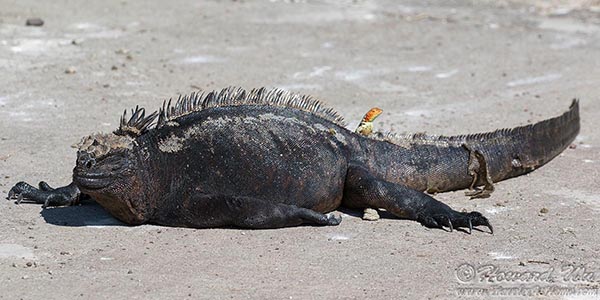
Marine Iguana

Lava Lizard
Here I eventually somewhat reluctantly photographed a Smooth-billed Ani, an introduced species in the Galapagos, but which was a new bird for me anyway.
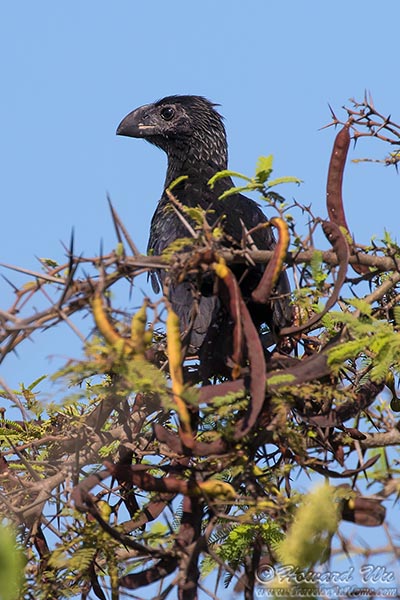
Smooth-billed Ani
In an exhibition room, we viewed the preserved skin of Lonesome George), the last of the Pinta species of Giant Tortoise, the ironic icon of both conservation and extinction, and a silent testimony to human greed and destruction.
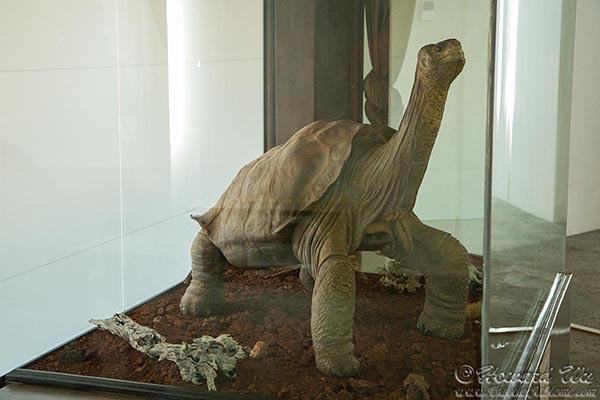
Lonesome George
There were many different species of captively bred Giant Tortoises in the center, but the atmosphere was more like a zoo (with throngs of visitors as well). The most interesting scene was these two mating in the enclosure (these are probably of the Hood Island species, you can see a list of Galapagos Giant Tortoise species here.
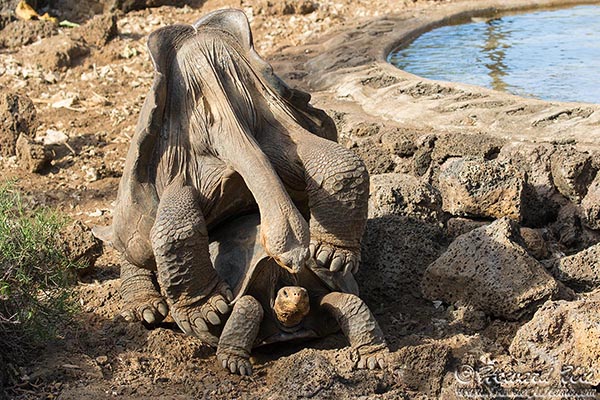
Giant Tortoises
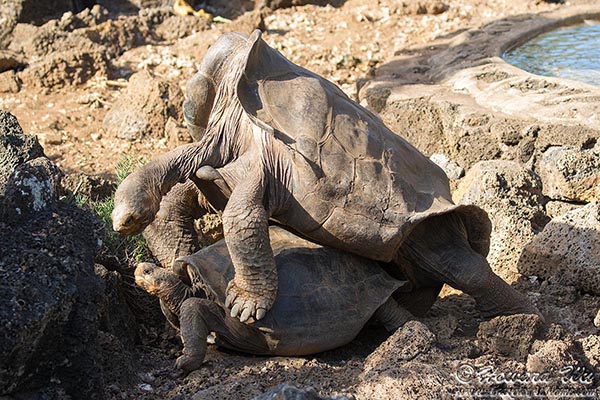
Giant Tortoises
In one enclosure for Land Iguanas, suddenly a couple of Cactus Finches landed and started pecking at the cactus pads. At that time I though I had not seen them before and was thrilled to see them there; later I would find out when going through my images that I had seen them at Cerro Dragon a few days ago. Still, I got much better pictures here and my excitement was not diminished.
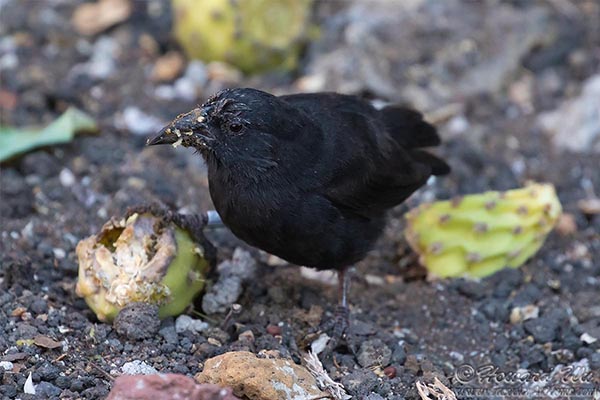
Cactus Finch
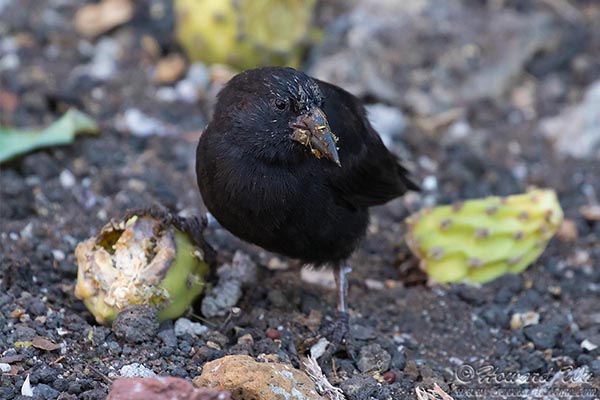
Cactus Finch
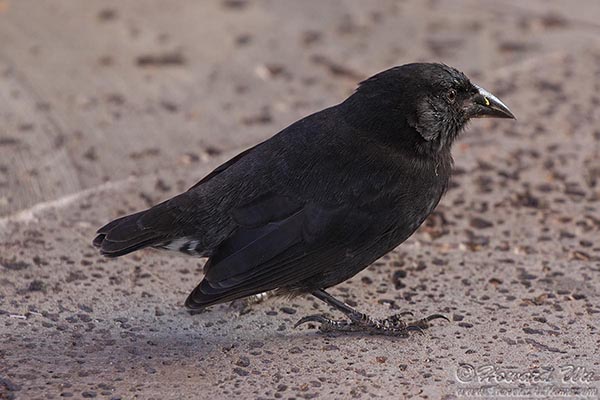
Cactus Finch
In another enclosure, I saw a hopping Galapagos Mockingbird. This one had a rather significantly deformed bill, but it seemed healthy and alert otherwise. I wish it well.
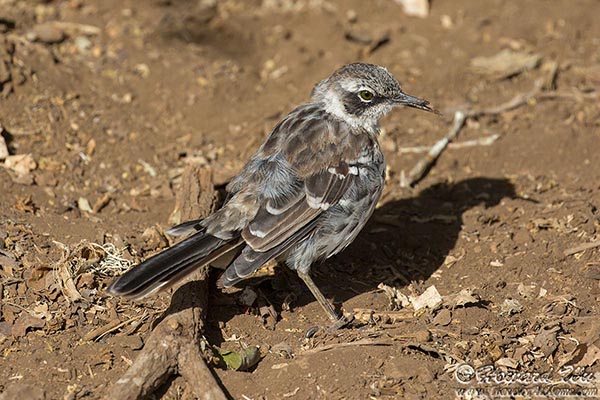
Galapagos Mockingbird
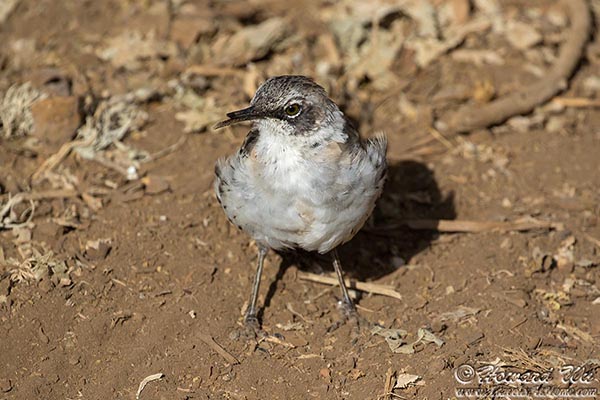
Galapagos Mockingbird
We strolled through town to get back to the dock. We passed by a cemetery. Here in the Galapagos, even cemeteries are more colorful.
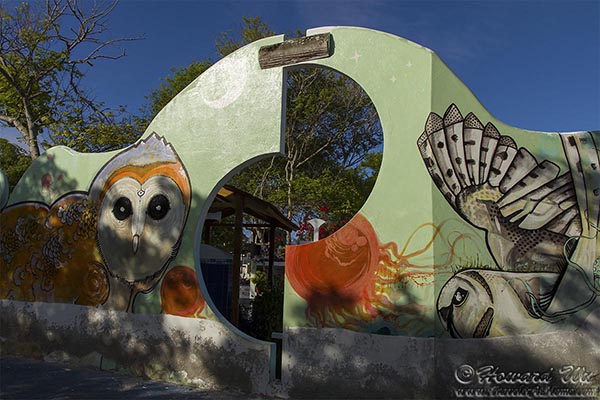
Cemetery
We continued to walk through town and reached the harbor.
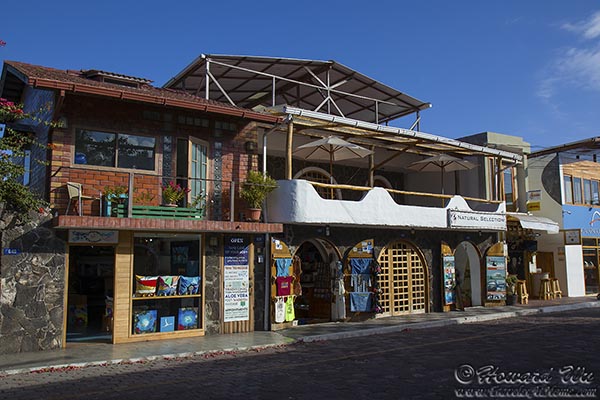
Puerto Ayora
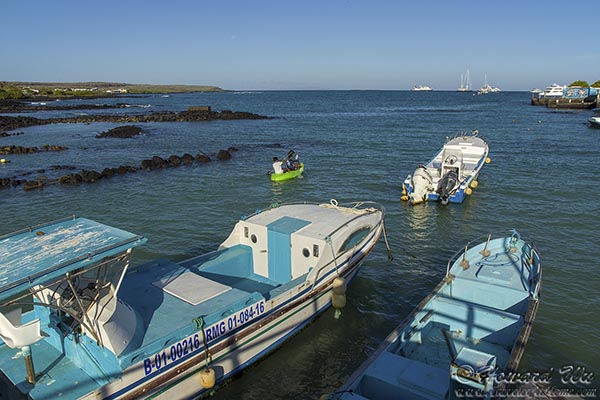
Puerto Ayora
On the dock, we saw many sharks swimming just below the boardwalk. Light was very bright and the sharks sometimes swam close to the surface (I think these are a species of Reef Shark), allowing me to get some decent pictures. Thus, my best "underwater" photos were in fact taken from a dock.
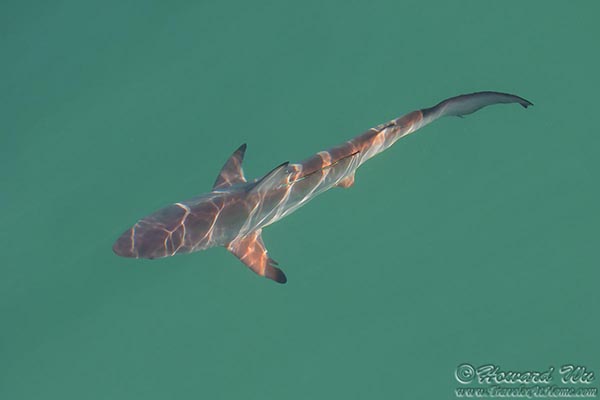
Shark
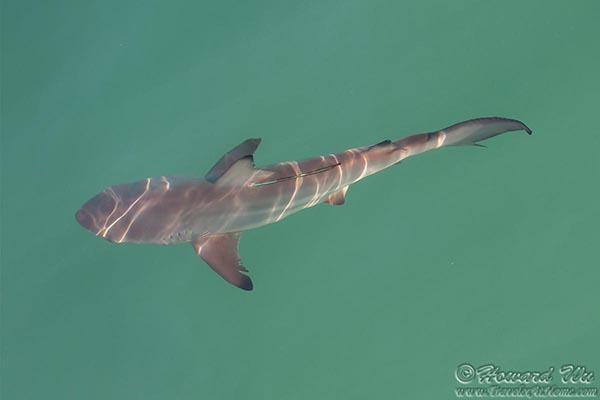
Shark
Also on the dock was a Galapagos Sea Lion sleeping on a chair, totally oblivious of all the comings and goings around it.
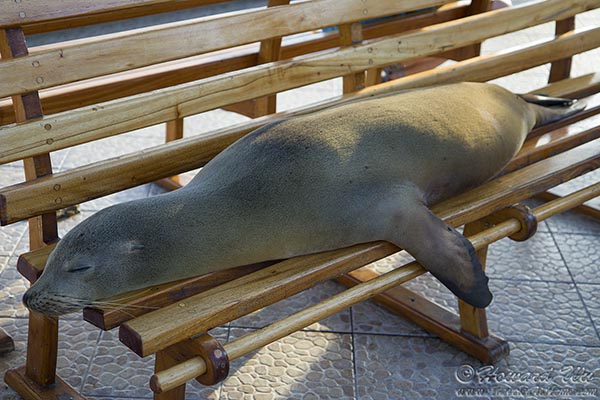
Galapagos Sea Lion
We eventually took the panga ride back to our yacht. From the sun deck, I watched the waxing moon rise over the water and took a few pictures of a pretty sailboat with the moon in the background.
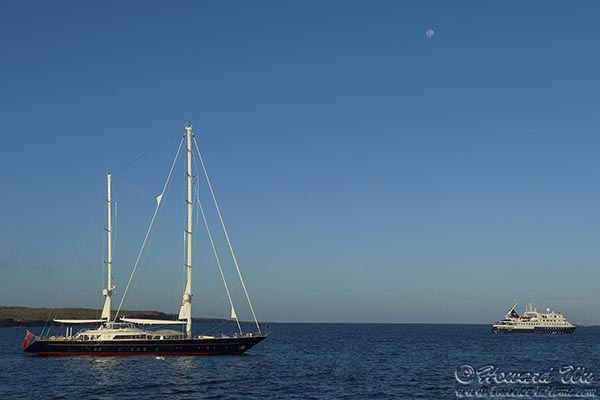
Boats
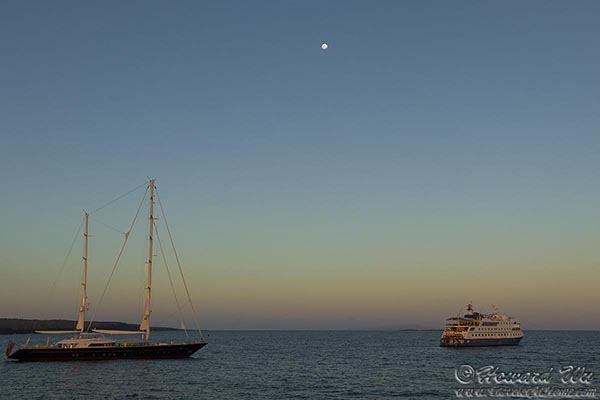
Boats
On the opposite side, the equatorial sun set over Santa Cruz Island. Hard to imagine, but this would be our last sunset in the Galapagos.
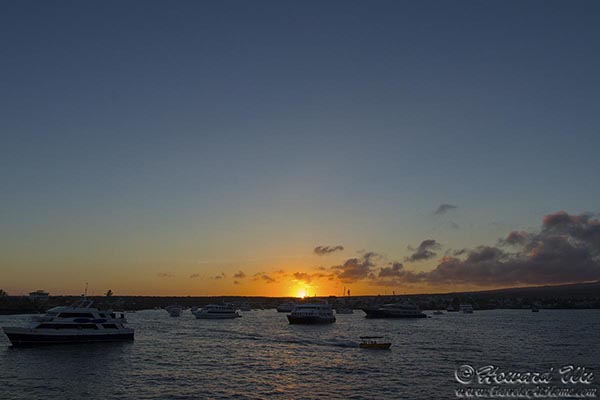
Sunset
Click the image below to return to the index page of Spring 2018 trip to the Galapagos:
